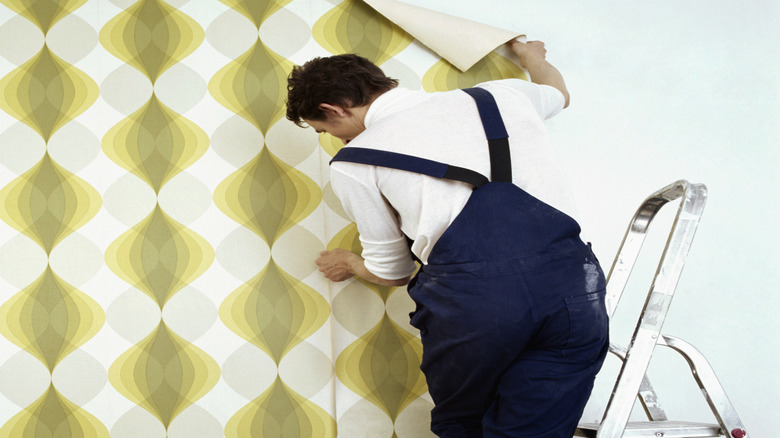Elevate The Look Of Wallpaper By Hiding Seams With A Helpful Tool You Already Own
When paint is not the answer, wallpaper is there to save the day. It is important to choose the right wallpaper for your space, but even the most beautiful patterns in the world will fall flat if they are not installed properly. One of the most common mistakes that DIYers make when hanging wallpaper (also some professionals) is creating obvious and unsightly seams at the points where two peel and stick panels overlap. Fortunately, there is an easy fix if you have a squeegee and a sharp utility or craft knife like an X-acto. Furthermore, this trick doesn't require reinstalling, gluing, taping, or any other modifications, making it quite simple.
TikTok user Anneliese of the account @ourliddlehome shows how to create a seamless transition between two wallpaper panels by simply running a blade down the center of the raised seam, then removing the excess paper from the top and bottom layers. The technique is called double cutting and is included in the official instructions for peel and stick and prepasted wallpaper brands like Spoonflower and About Murals. Here's everything you need to know to properly complete this trick.
How to hide wallpaper seams with a utility knife
It's important to note that this trick only works with wall coverings that are designed to be overlapped. It also won't fix the situation if a bad install left the graphics unaligned to begin with. If the pattern on the overlapping material is not the same on both layers, then cutting into the top layer and removing the excess will only make the division more apparent. Some wallpaper panels are also designed to installed side-by-side instead of overlapping. To fix those types of visible seams, we recommend the clever crayon hack that involves coloring the edges before installation.
As TikToker Anneliese demonstrates, overlapping seams can either be cut in a straight vertical line or they can be sliced in a way that accounts for larger design elements. As long as you stay within the borders of the seam, the final result should be very similar. However, some commenters point out that wavy lines are typically less visible than straight ones. Keeping the angle of the blade and the pressure consistent throughout the cut ensures that you just cut through the two layers without damaging the wall underneath. After peeling away the trimmed material from both the top and bottom layers of wallpaper (this will require you to peel back the remaining top layer slightly), a squeegee or scraper should be used to flatten out the end result. Even the edge of a credit card could be used for this final step.
